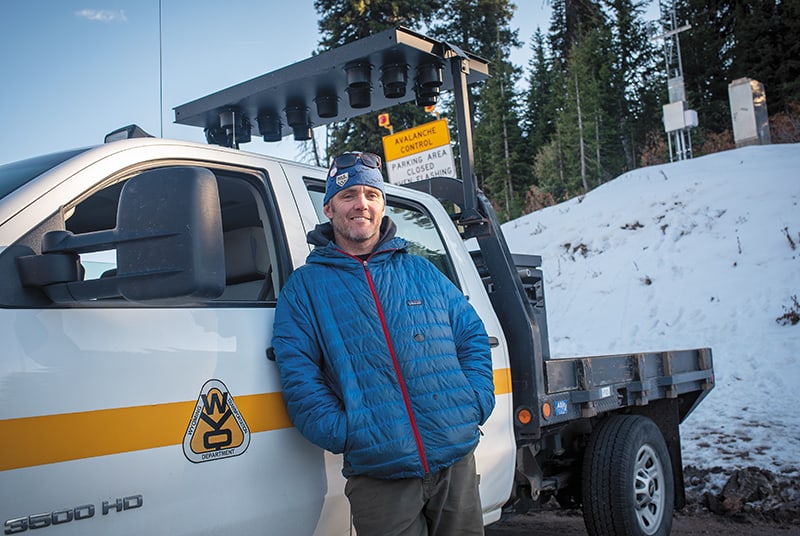Read The
Current Issue
Locals: Brenden Cronin
Interview by Brigid Mander

Photo by Bradly J. Boner
BRENDEN CRONIN’S FIRST job in Jackson did not go well. After a three-month road trip around the West, he says, “I showed up in Jackson with no money, a broken-down truck, crashed on a friend’s couch, and got a job snowmaking at Jackson Hole Mountain Resort (JHMR).” That was in 2006. Cronin lasted on the job only about a month, during which he totaled two official vehicles, one snowmobile, and one ATV. “I was kind of asked to leave,” he says. Despite no job—and no ski pass; that went away with the JHMR job—the Saugus, Massachusetts, native was undeterred, and he stuck around. Now 37, Cronin has a job that makes him an important part of the community. He is one of only two highway avalanche forecasters in the state for the Wyoming Department of Transportation (WYDOT); it’s his job to keep the roads over Teton Pass and through the Hoback and Snake River Canyons, all of which lie beneath serious avalanche terrain, safe for drivers throughout the winter. And no, he hasn’t dinged a WYDOT vehicle, despite sometimes having to step in and drive a snowplow or rotary after a full day of working his avalanche forecaster job. “Driving those plows is so stressful,” he says.
Q: What did you do after your snowmaking career fizzled?
BC: The next three winters, I guided cat skiing on Togwotee Pass, until the lodge sold and they canned that program. I came back to snowmaking to show I could do that job properly, and they gave me a chance.
Q: Still, you ended up trying to transition into something else?
BC: I was on the snowmaking crew for six years, and then the rent-a-troller program [in which aspiring ski patrollers substitute for full-time patrollers]. I also started shadowing courses at the American Avalanche Institute. I was trying to teach my girlfriend at the time about the backcountry. She said, “Cronin, you get so fired up when you talk about snow, you need to teach this!” She wanted me to get out of the snowmaker rut.
Q: How did you finally get out of the snowmaking rut?
BC: I got hired as a full time JHMR patroller.
Q: But that’s still not teaching.
BC: What inspired me to get into this [WYDOT] side of snow science was using my skills to help more people than just skiers—if you keep a road open, you’re helping people who don’t even know you’re helping. You keep a whole community safe and moving.
Q: That sounds like a lot of pressure?
BC: It’s intense. Teton Pass is the busiest stretch of highway in [Wyoming]. My workweek can be sixty to ninety hours.
Q: Do you ski on the pass yourself?
BC: I’d say I skied the pass eighty to a hundred days last season. Skiing [there], specifically Mt. Glory, is a huge part of my job. It gives us an intimate knowledge of what is going on in that particular snowpack.
Q: Pass skiers and WYDOT seem to be at odds with one another: After a storm, skiers want fresh powder and WYDOT needs to keep the road open and safe for commuters and other drivers. How do you balance being part of both sides?
BC: I feel fortunate to be a liaison between skiers and WYDOT. I can convey to the ski community WYDOT’s point of view: avalanche control is not for skiers, but [for] the highway. I also go to a lot of meetings, and add my two cents as an avalanche professional and a skier to help people who aren’t skiers see that side.
Q: There are powerful Gazex systems on the pass to do avalanche control: do you get to set these off?
BC: Yes, we set off the Gazex.
Q: How does the feeling of setting off a Gazex compare to skiing powder?
BC: It’s pretty cool, as we do it at 3:30 or so in the morning from [a] truck on the pass, and the highway is closed. But it’s not nearly as cool as skiing powder!




